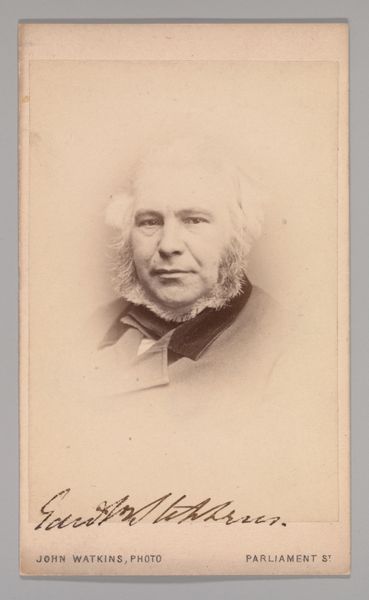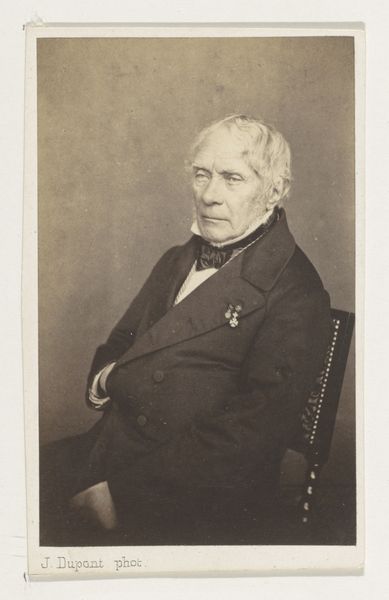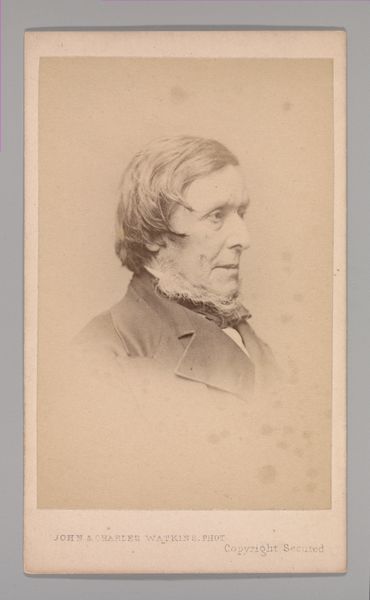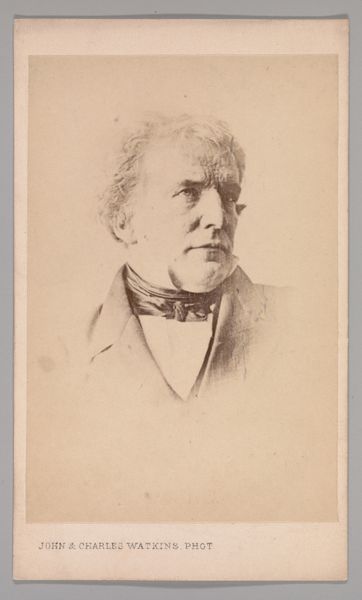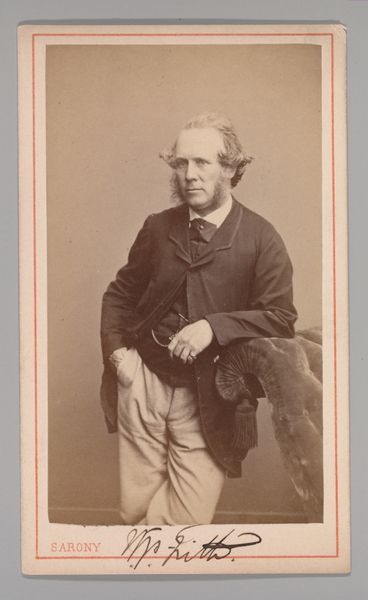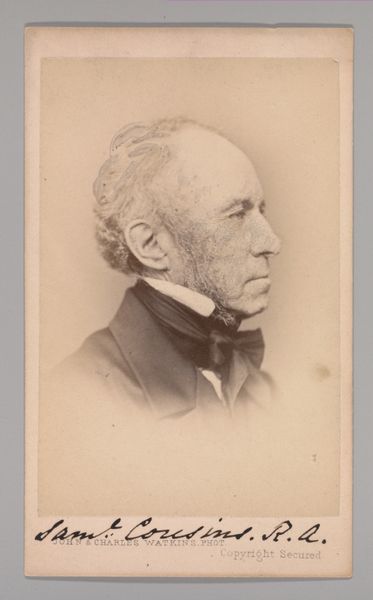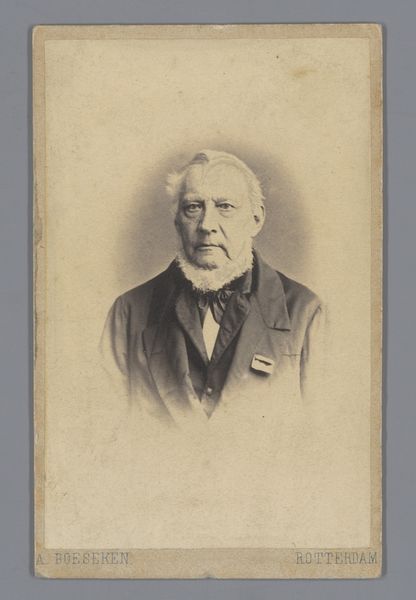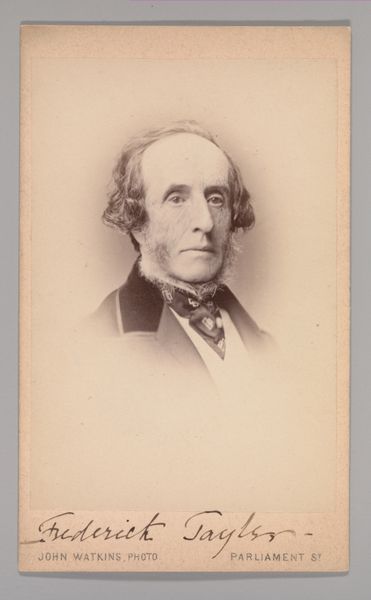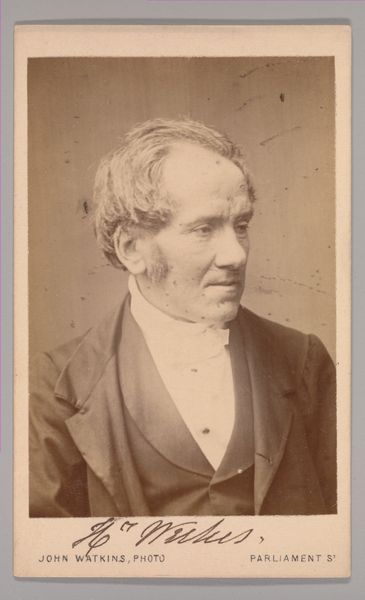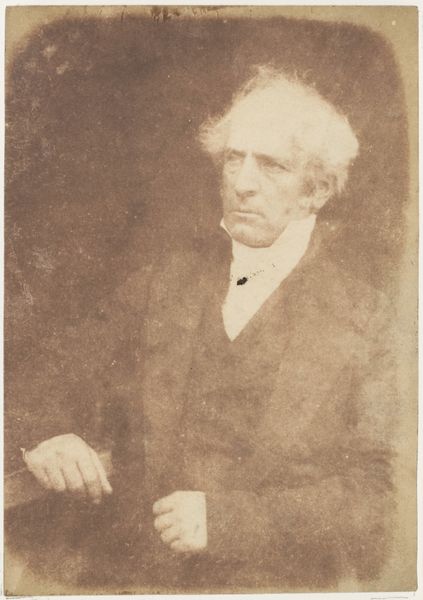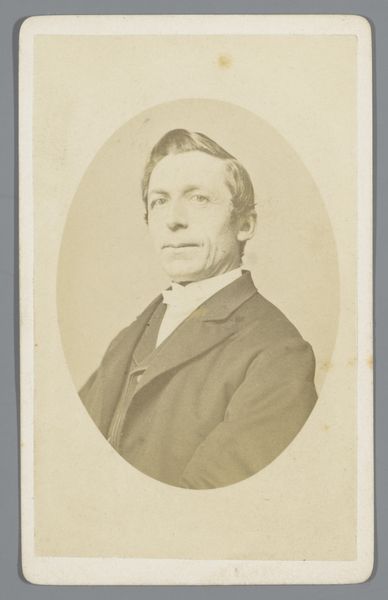![[Unknown Subject] by John and Charles Watkins](/_next/image?url=https%3A%2F%2Fd2w8kbdekdi1gv.cloudfront.net%2FeyJidWNrZXQiOiAiYXJ0ZXJhLWltYWdlcy1idWNrZXQiLCAia2V5IjogImFydHdvcmtzLzJiNzFjNWViLWUwNWQtNDAzZi1iZTU2LTc5YjI3NDgwYzIxYi8yYjcxYzVlYi1lMDVkLTQwM2YtYmU1Ni03OWIyNzQ4MGMyMWJfZnVsbC5qcGciLCAiZWRpdHMiOiB7InJlc2l6ZSI6IHsid2lkdGgiOiAxOTIwLCAiaGVpZ2h0IjogMTkyMCwgImZpdCI6ICJpbnNpZGUifX19&w=3840&q=75)
photography, gelatin-silver-print
#
portrait
#
photography
#
gelatin-silver-print
#
men
Dimensions: Approx. 10.2 x 6.3 cm (4 x 2 1/2 in.)
Copyright: Public Domain
Curator: Standing before us is a gelatin-silver print from the 1860s, created by John and Charles Watkins. It's a portrait, but the subject remains unidentified. Editor: There's a haunting quality to it, isn't there? A kind of austere gentility captured in the tones, a somber but determined expression. I can almost feel the weight of the era emanating from the piece. Curator: Absolutely. These types of portraits, mass-produced as cartes de visite, gained immense popularity during that period, influencing social perceptions and representation. It democratized the accessibility to portraiture at the time, changing social visibility in an innovative way. Editor: And even in this example, which might not be of an elite member of society per se, there's a definite attempt to project an image of respectability, if not prosperity. Note the meticulous collar, the neatly arranged bow—status performed in a world rapidly shifting with class tensions. It hints at aspirations, or at least anxieties. Curator: Yes, the photographers John and Charles Watkins capitalized on that. Their London studio became known for capturing the likenesses of prominent figures, but also middle-class individuals eager to participate in this visual culture. The use of photography and these easily produced cards shaped visual identity and popular representation, in part to create visual hierarchies. Editor: It is an exercise in careful staging of self, for sure, despite photography often being called "realistic" media. It’s the art of manufacturing social presence in the Victorian Era. Do you feel it challenges our contemporary modes of identity performance? Curator: In a way, the portrait acts as an anchor between then and now, doesn't it? We might use digital profiles and social media, but the drive to construct a specific public image, and control visibility, feels undeniably consistent across the ages. It forces me to consider these kinds of images as examples of institutionalised image production with intended control. Editor: I hadn't considered that point but you are right! Despite the sitter remaining a mystery, the work itself speaks volumes. Curator: Precisely, the work has certainly sparked some insightful conversation. Editor: Indeed! I find it to be deeply poignant, really.
Comments
No comments
Be the first to comment and join the conversation on the ultimate creative platform.
